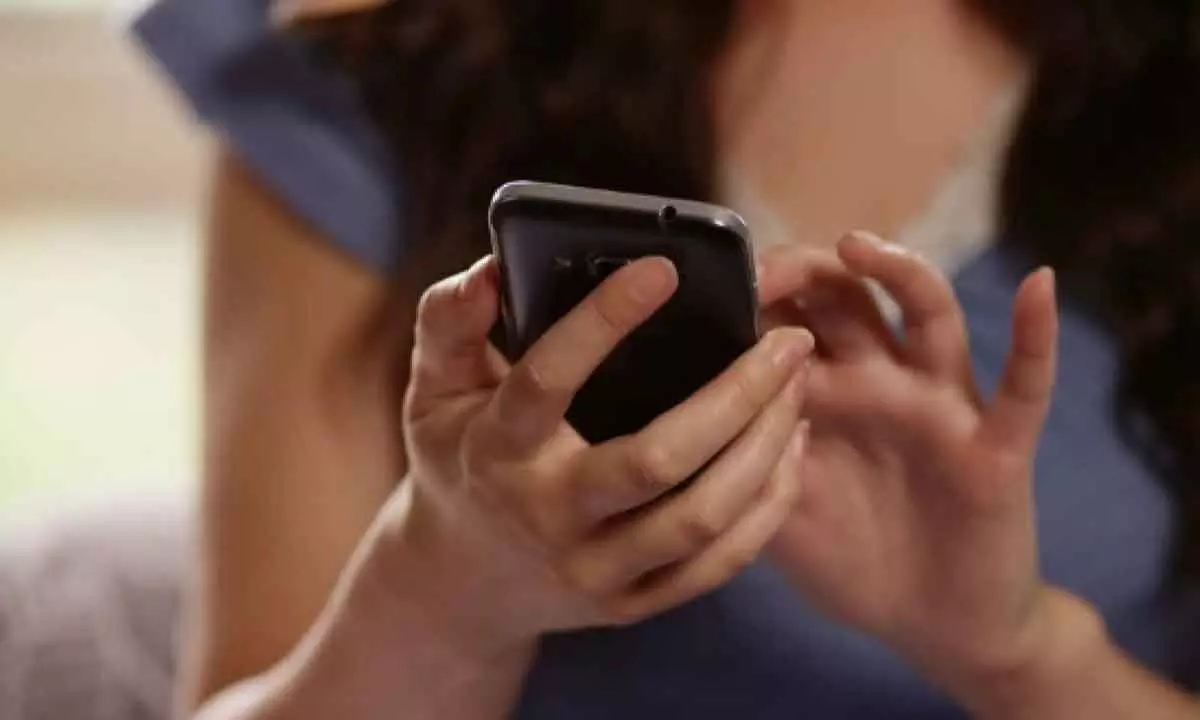Live
- PM Modi to throw open global cooperative conference on Monday
- Toyota Kirloskar Motor Celebrates “Namma Kannada Habba 2024” Japanese CEO Wins Hearts with Fluent Kannada
- India turning into world’s Deep Tech Hub as reforms reverse brain drain: Hardeep Singh Puri
- Two killed in separate bomb blasts in Pakistan
- Woman postmaster refuses to bribe senior, gets him booked by CBI
- Three killed in violence over mosque survey in UP’s Sambhal
- One killed, four injured in hand grenade explosion in southern Croatia
- IPL 2024 Auctions: Heartening to see almost every team showing interest in Yuzi, says childhood friend Piyush
- 15 killed, 20 injured in alleged paramilitary attack in Sudan
- Drugs valued at Rs 16 cr seized in Tripura
Just In
Only 31% women own mobile phones in India


New Delhi: In India, 61% men had a mobile phone, while only 31% women owned one by the end of 2021, non-governmental organisation Oxfam has said in a...
New Delhi: In India, 61% men had a mobile phone, while only 31% women owned one by the end of 2021, non-governmental organisation Oxfam has said in a report on the digital divide in the country.
Citing data from private think tank Centre for Monitoring Indian Economy, Oxfam India said its research showed that access to mobile phones is essential to tackle lack of information among women, strengthen their independent decision-making and provide access to health services.
The report, titled "India Inequality Report 2022: Digital Divide", also showed that only one-third of internet users in India are women and the country has the widest gender gap of 40.4% within the Asia-Pacific region when it comes to internet access.
Indian women are 33% less likely to use mobile internet services than men, according to the report. "Limited by less expensive and sophisticated handsets, women use a smaller range of digital services (often primarily voice and SMS)" the report noted. Besides gender, the report also paints a worrying picture of disparity in access to digital devices and services across classifications like caste, wealth and education.
The report analysed data from the Centre for Monitoring Indian Economy's household survey from January 2018 to December 2021, and also used secondary analysis from the National Sample Survey.
"India's growing inequality is accentuated due to the digital divide," Oxfam India Chief Executive Officer Amitabh Behar said. "People without devices and the internet get further marginalised due to difficulties in accessing education, health, and public services."
Among the poorest 20% of Indian households, only 2.7% have access to a computer, while 8.9% have access to the internet, the report showed, citing 2017-'18 data from the National Sample Survey Office. In contrast, 27.6% of the top 20% households have a computer and 50.5% have internet.
Among students too, 41% who belong to the richest 10% section have a computer with internet access, the report said. The share declines to 16% among the next 10% richest students, and to 10% in the third-richest decile. Among the poorest 10% students, only 2% have a computer that has internet services.
The study showed that none of its respondents who have had no education, have a computer, whereas 39% of those with a post-graduate or a PhD degree have one. In the case of mobile phones, only 11% of the uneducated respondents owned a handset, as compared to 76% of those with a post-graduate or a PhD degree.
The report also cited an earlier survey conducted by Oxfam India in 2020, which noted that 75% of Indian parents and 84% of the teachers faced challenges with digital education.
The employment status of Indians also proved to be linked to access to digital services, as 95% of the permanent salaried workers have phones, as compared to only 50% of the unemployed, the report found.
In the case of access to computers, the difference between the general category and Scheduled Tribes was as high as 7 to 8% between 2018 and 2021, the report showed.
The percentage of the population among Scheduled Castes and Scheduled Tribes with no computers has remained largely similar, but the number of people having no computers within the general and Other Backward Classes increased slightly during the pandemic, according to Oxfam.

© 2024 Hyderabad Media House Limited/The Hans India. All rights reserved. Powered by hocalwire.com






